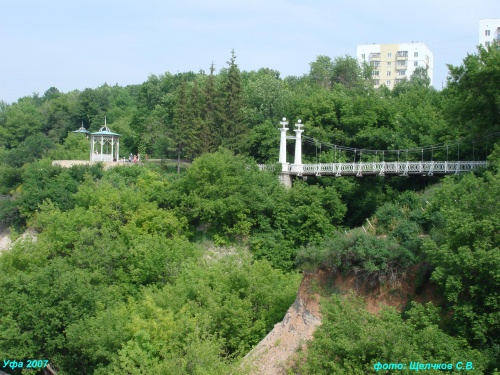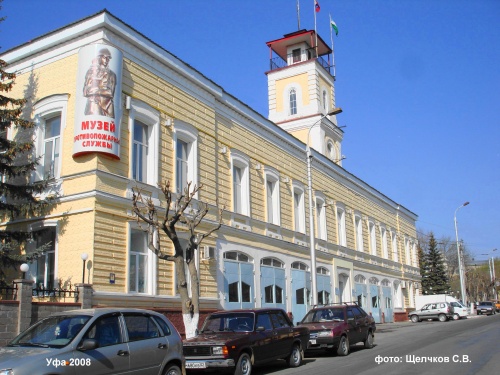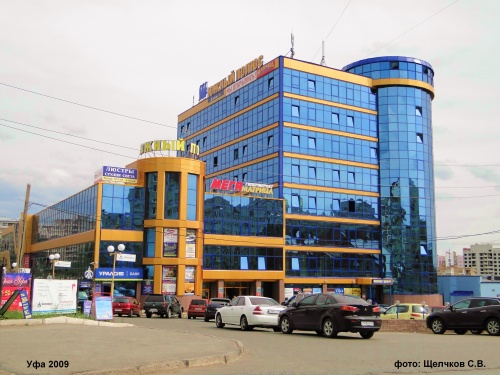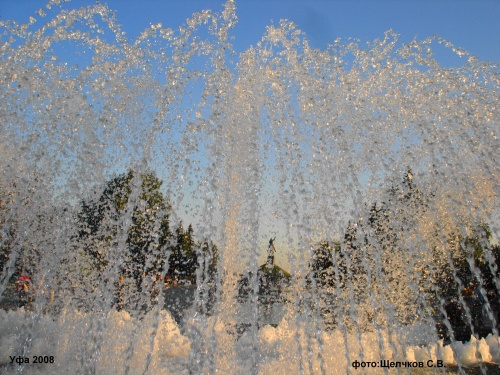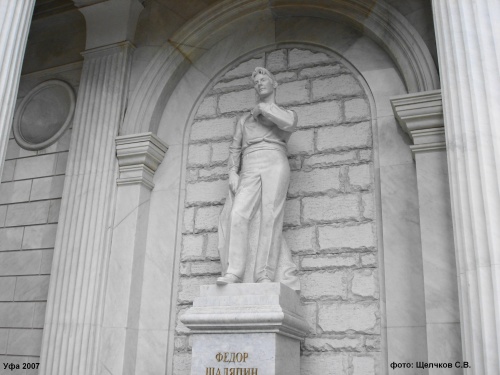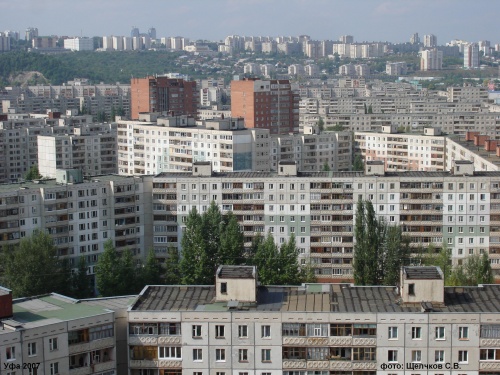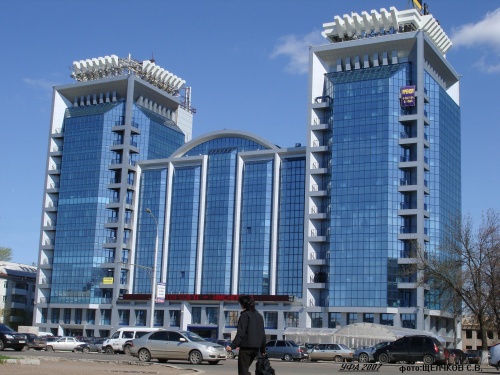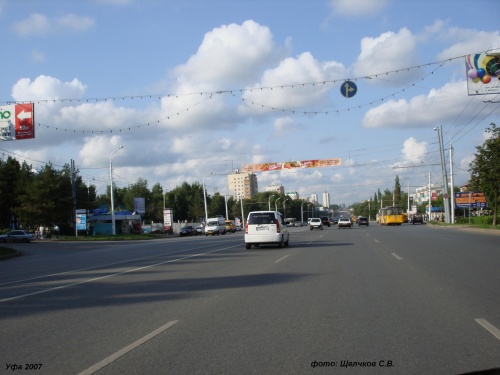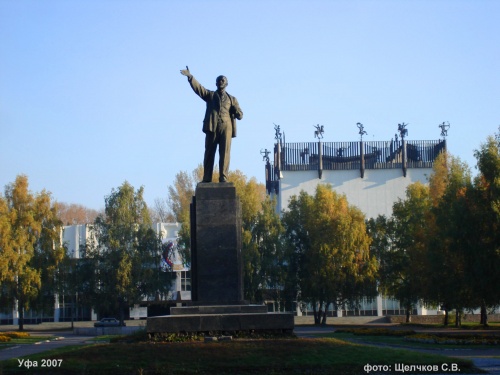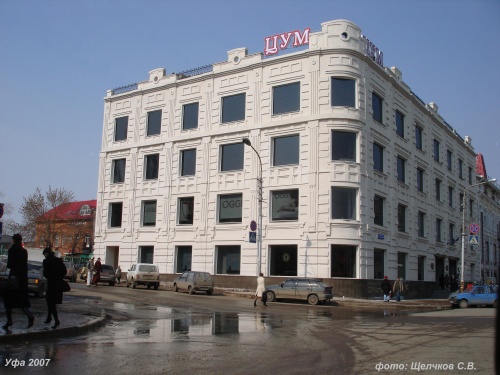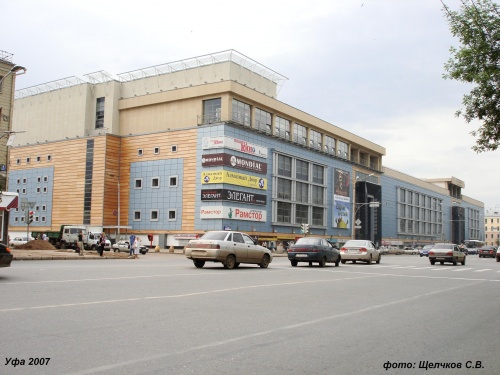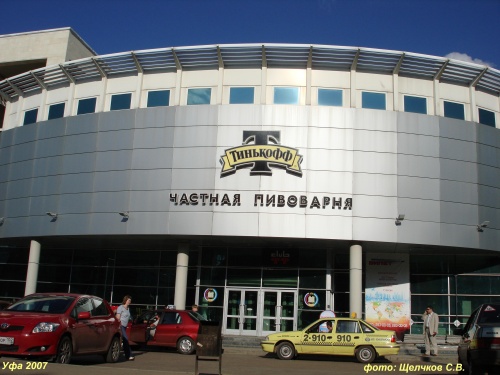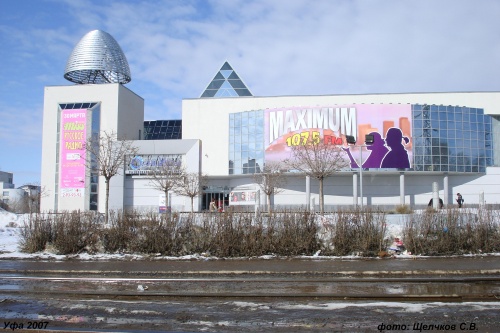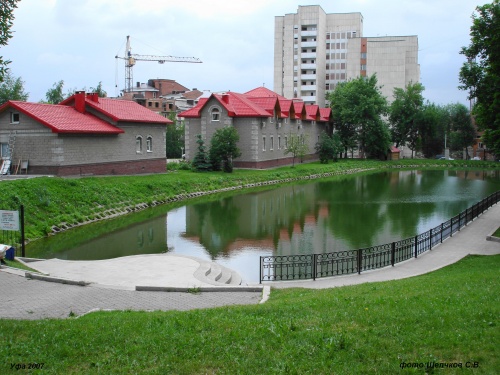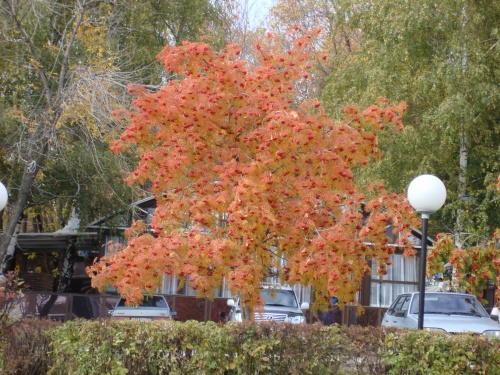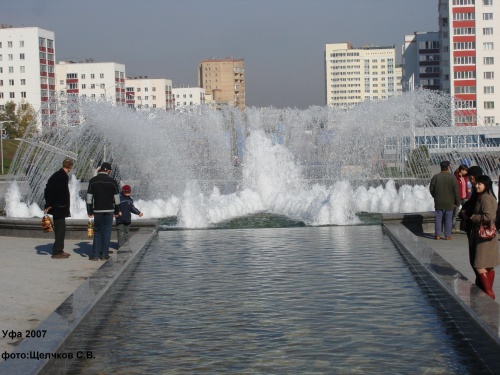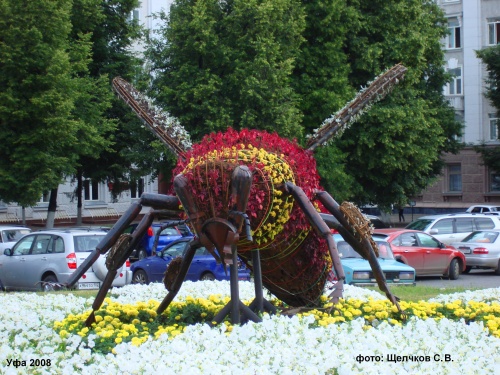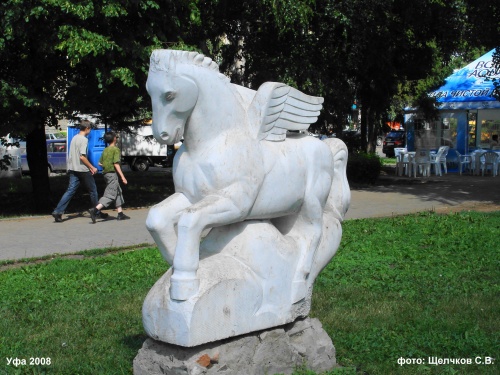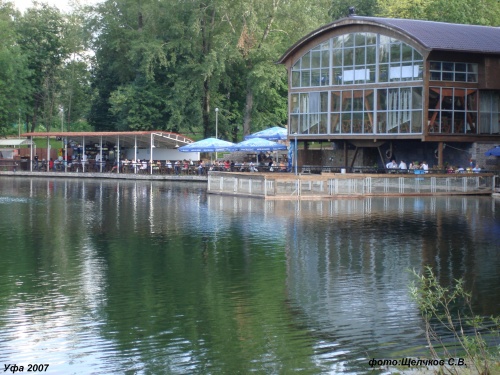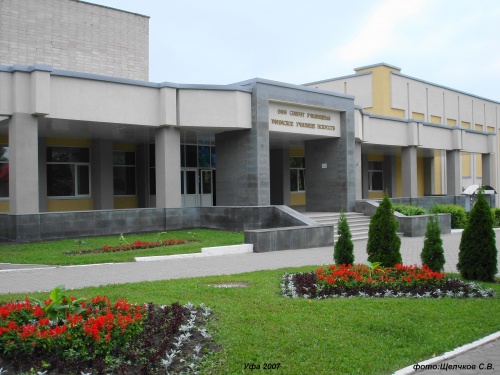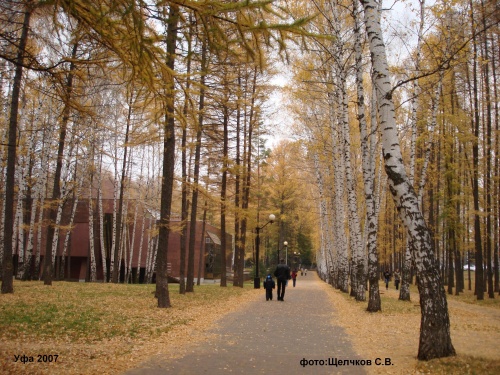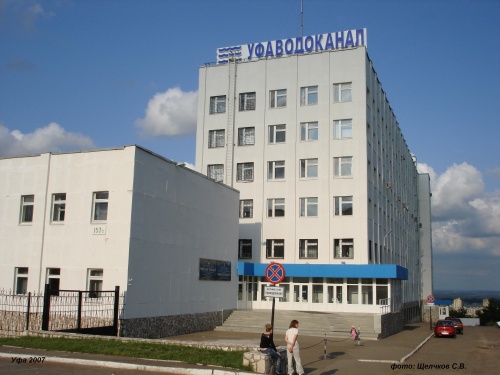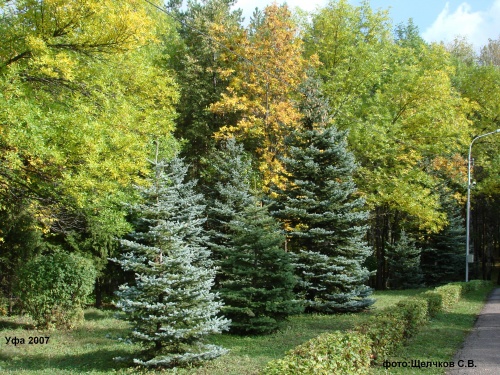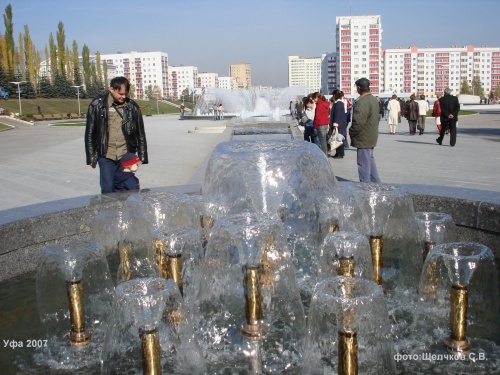Photo excursion - Ufa (Architecture, monuments, parks and other interesting places) (165 photos) (part 2)
First written mention under 1574
The city was founded at the confluence of the Belaya and Ufa rivers at the request of the Bashkirs by Russian archers under the command of governor Ivan Nagogo. The fortress city is named after the river Ufa. Since 1586, Ufa, the administrative center of Bashkiria, received the status of a city. Since 1728, it reports directly to the Senate. Since 1744, as part of the Orenburg province. In 1773 it withstood the siege of Pugachev's troops.
In the 11th-13th centuries, the Belaya River basin was inhabited by Turkic tribes, mainly Bashkirs. In 1219-1223 they were conquered by the Mongols, who made these lands the main base for further conquests. The rest of the region was conquered by 1223. The areas inhabited by the Bashkirs were divided between two uluses bordering on the Yaik River. The Ural Bashkirs became part of the personal ulus of Batu Khan. In the second half of the 14th century, after the collapse of the Golden Horde, this region came under the rule of the Nogai Horde.
When in 1552 the troops of Ivan IV took Kazan and defeated the Kazan Khanate, the Bashkirs accepted Russian citizenship. Their lands became part of the Russian state. The tsar granted new subjects special letters, which recognized the patrimonial right of the Bashkirs to their lands. For this, the Bashkirs agreed to pay yasak in furs and honey, and later in money. They were guaranteed protection from the invasion of external enemies, promised the preservation of religion and independence of internal life. The territory was governed by the Moscow order of the Kazan court.
The annexed territory was divided into four regions, the boundaries of which converged where the Belaya and Ufa rivers merged. Here they decided to found a fortified city. According to legend, the city of Ufa was founded at the request of the Bashkirs, who found it difficult to bring yasak to Kazan because of the long distance. In 1574, a detachment of Russian archers arrived here under the command of the governor Ivan Grigorievich Nagoy. The Lights built a small fortified fortress. The chosen location turned out to be very advantageous for defense. The garrison quickly settled into the new place. Gardens and vegetable gardens appeared next to the fortification. The basis of the future city was the Kremlin, the length of whose walls reached 450 meters. The walls themselves were built from huge oak logs placed vertically. They had three towers, two of which were roadways, and one was pedestrian. The fortress city received its name from the name of the Ufa River. The Bashkirs called it Imen kala - Oak Fortress, or Oak City.
Due to constant raids by nomads, Ufa had to maintain a strong garrison. Life in the fortress was far from peaceful. In 1586, Ufa received city status and became the administrative center of Bashkiria. The region was ruled by the Ufa governor, subordinate to the Kazan governor.
Throughout the 17th and first decades of the 18th century, Ufa remained a border fortress, extended far to the southeast from the general line of Russian fortifications. It defended state borders from attacks by neighboring nomadic peoples. By the middle of the 17th century, the number of households according to the census did not exceed 200, half of them belonged to the garrison. Around the city there were settlements fortified with primitive defensive structures. With the growth of Ufa, the old Kremlin fortifications and those built around the settlements became insufficient. Construction of a new defense line began in Ufa in 1664.
By the beginning of the 18th century, the city significantly expanded its territory. There were over 650 households in it. In 1708, Ufa became part of the Kazan province, and from 1728 the city began to report directly to the Senate. In the 1730s, Ufa was made the base for the construction of Orenburg, and in 1744 it was included in the Orenburg province.
In the middle of the 18th century, state borders moved far to the southeast. A new Orenburg line of fortresses arose. Ufa lost its former strategic importance, although it continued to be the military center of Bashkiria. In May 1759, a fire broke out in Ufa, which damaged not only the Kremlin, but also most of the city. A total of 210 households burned down. The fire affected the layout of the city. After him, the Kremlin fortifications were no longer restored, since there was no need for them.
In the 18th century, Ufa withstood sieges several times, the longest of which was the siege of the city in 1773 by the army of Emelyan Pugachev, which lasted four months. The rebels failed to take the city. As a sign of gratitude for loyalty to the crown, Catherine II named Ufa a memorable city.
The famous Russian writer S.T. spent his childhood in the vicinity of Ufa. Aksakov.
In 1796, Ufa became a district city, but six years later it again received the status of a provincial city. This stimulates the development of urban planning and urban management. Straight and wide streets with paved sidewalks appear. In the 20s of the 19th century, construction of the Trading Rows began, which lasted 40 years. The expansion of urban construction caused a rapid increase in the production of bricks and tiles. Over the course of half a century, the number of industrial enterprises increased from 7 to 38. Small oil mills, vodka factories, soap factories, candle factories and tanneries operated.
Further growth of the city was
associated with railway construction, and in the second half of the 19th century, Ufa turned into an industrial and large transport hub. In September 1890, the operation of the Ufa-Zlatoust section of the railway and the bridge across the Ufa River began. In August 1888, the main workshops of the Samara-Zlatoust Railway, equipped with advanced technology for that time, came into operation in Ufa. They carried out work on major repairs and assembly of locomotives, carriages, and steam boilers.
At the same time, the first manufactory-type enterprises appeared in Ufa in the woodworking and silicate industries. The food industry grew rapidly, its production volume increasing 10 times. A significant shift has occurred in trade. If at the beginning of the 19th century the residents of the city made any significant purchases in Kazan, then by the end of the 19th century there were 57 cargo and passenger ships plying along the Belaya River. Ufa became the center of the Belsky River Route and a major pier.
At the beginning of the 20th century, Ufa remained a typical provincial city, differing, however, from many surrounding provincial centers in its rapid pace of development. Trade played a large role in the economic life of the city; its turnover has increased significantly compared to the end of the 19th century. Large wholesale transactions were concluded on the stock exchange. About 1,500 establishments were engaged in retail trade. Numerous shops were located in the Gostiny Dvor premises.
By the beginning of the 20th century, the problem with drinking water began to be solved in the city. In 1901, the first stage of the water supply system went into operation, serving the central part of the city.
The First World War had a huge impact on the life of the city. In the fall of 1914, construction work stopped and most brick factories closed. Food prices have increased. In November 1916, a rationing system was introduced for flour, sugar, salt and other products. The curtailment of production continued later. The city economy fell into decay due to lack of funds.
